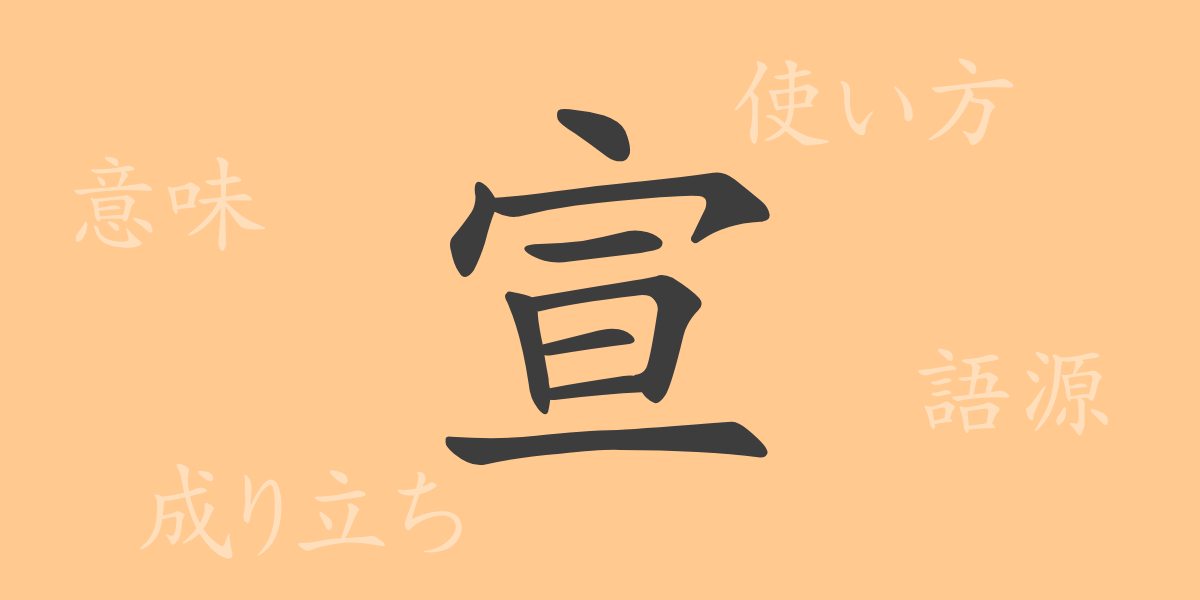In the rich tapestry of Japanese written culture, Kanji play an indispensable role in everyday life. Among these, “宣” (セン) is a character used across various contexts. This article delves into the history, meaning, pronunciation, and the expressions using “宣”, offering valuable insights for those interested in Japan’s textual culture and deepening their understanding of Kanji.
Origins of 宣 (セン)
The kanji “宣” originates from ancient China, literally meaning ‘to spread words.’ Initially an ideogram depicting a person spreading words, it has evolved over time but has retained its fundamental meaning related to ‘communicating’ and ‘spreading.’ The essence of “宣” has consistently been associated with these actions since antiquity.
Meaning and Usage of 宣
“宣” is used in words like “宣言” (せんげん ‐ declaration), “宣伝” (せんでん ‐ promotion), and “宣布” (せんぷ ‐ announcement), primarily signifying the act of publicly disseminating information. It is employed in contexts like governmental announcements or corporate communications, indicating the formal and extensive distribution of information.
Pronunciation, Stroke Count, and Radical of 宣
The kanji “宣” is utilized in Japanese with various readings, depending on the context.
- Readings: On’yomi “せん”; no specific Kun’yomi but phrases like “のたまう” (notamau) and “のたまわく” (notamawaku) are derived from it.
- Stroke Count: 9 strokes.
- Radical: “宀” (うかんむり).
Idioms, Phrases, and Proverbs Using 宣
There are numerous idioms and phrases incorporating “宣” in Japanese, reflecting its metaphorical and literal uses:
- 宣伝 (せんでん) – To widely publicize products or services.
- 宣告 (せんこく) – To officially declare something.
- 宣言 (せんげん) – To publicly express one’s intentions or resolutions.
- 自宣 (じせん) – To promote oneself.
- 放宣 (ほうせん) – To broadly announce to the public.
Conclusion on 宣
The kanji “宣” symbolizes the importance of communication, reflecting the power of words and the depth of sharing information culture. Understanding “宣” as a common kanji in Japanese not only enriches our communication but also represents a step towards attaining greater expressive abilities. This exploration into “宣” unveils the profound history and cultural depth embedded in just one character.

























